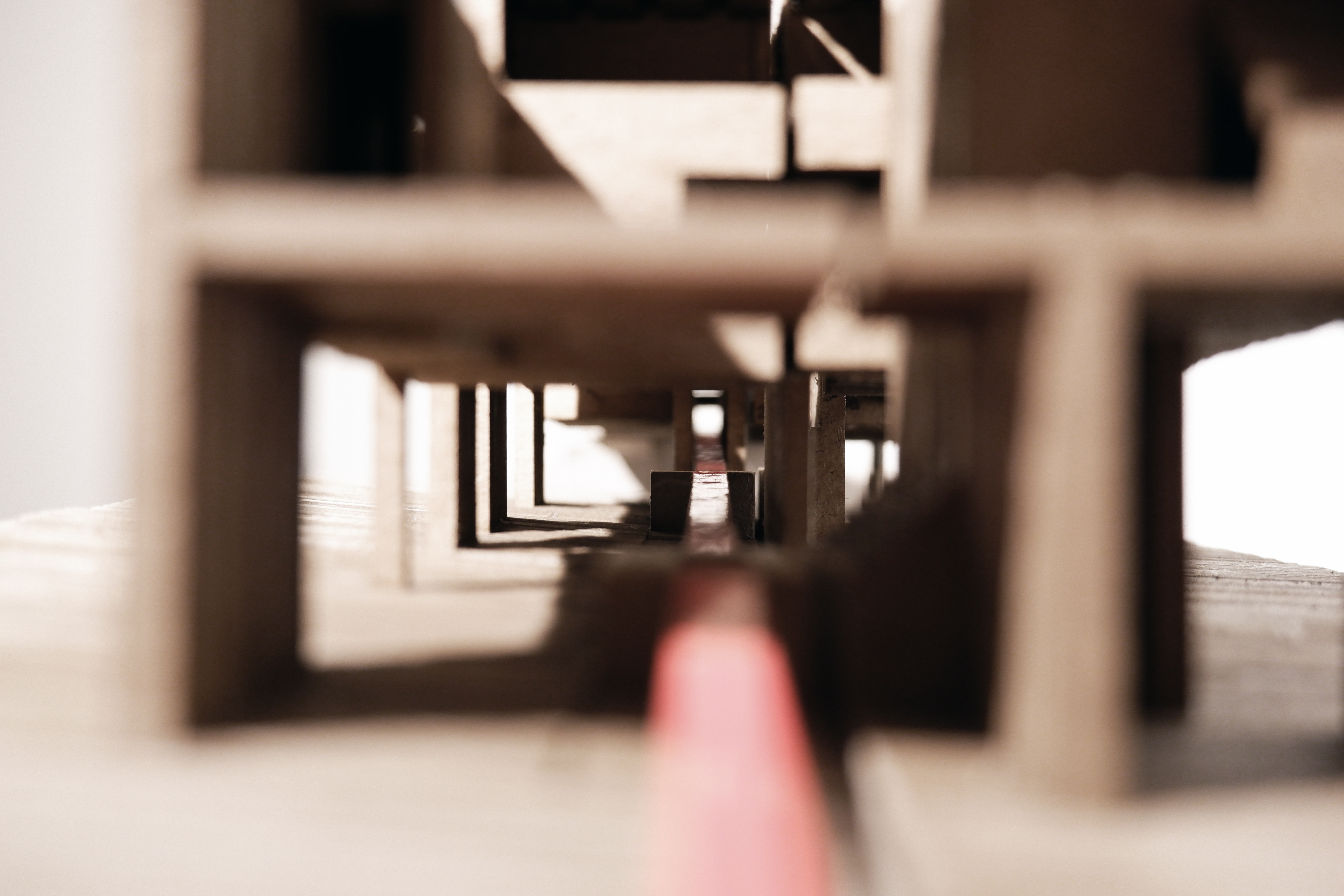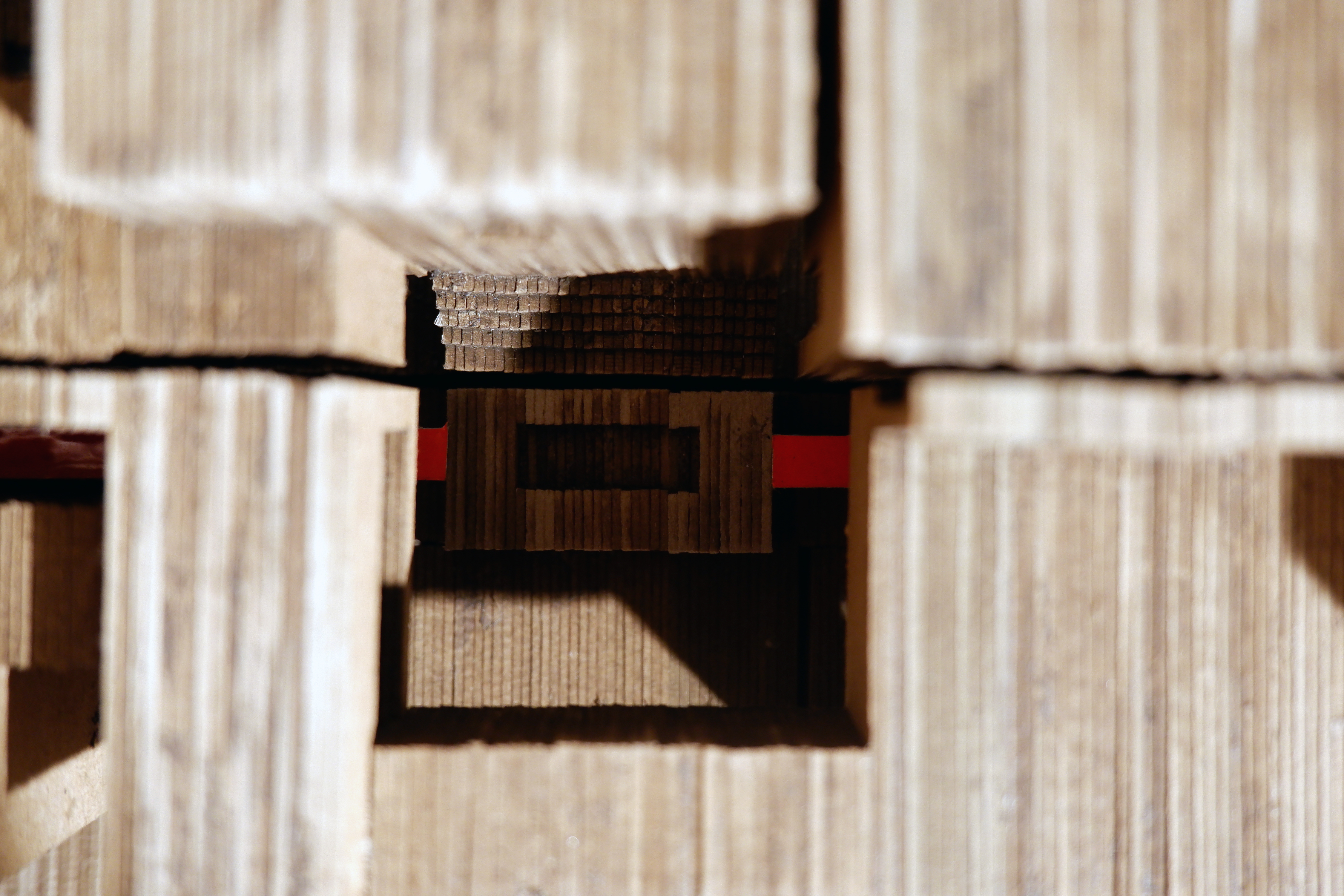


Museum of Catastrophes:
An Experimentof Translation and
Empathy Towards Climate and it’s Impacts
Critics: Luis Pancorbo
Location: Los Angeles, California
Area: 40,000sf | 3,700sm
Term: Spring 2019
An Experimentof Translation and
Empathy Towards Climate and it’s Impacts
Critics: Luis Pancorbo
Location: Los Angeles, California
Area: 40,000sf | 3,700sm
Term: Spring 2019
In reading about the history of catastrophes in Los Angeles, be they environmental, societal, or other, they so frequently occur in this place that for local residents there is an extreme fear of their surrounding environment and for those of us from a distance, it appears to become another repetitive news item in our inundation of daily media feeds. I found this to be a particularly intense and overwhelming reality and wanted to explore impacts and empathy through the design of a Museum of Catastrophes. Focusing primarily on the environmental catastrophes, the research began by understanding the types, history, frequency, and spacial experience of these catastrophes which impact Los Angeles. It was also important to acknowledge and understand that people are not simply victims in this situation but likewise make daily decisions about how they treat and use or abuse their environments.
Thinking across the spectrum, from those who have never experienced catastrophes personally to those who are constantly at risk of exposure to catastrophes, the program of the Museum of Catastrophes emerged. Here, visitors will be able to feel, learn, and see how catastrophes may unfold, unpacking each of the extreme sub experiences which could be part of a catastrophe.
Each of the experiences is laid out in a sequence where within the museum where you can travel to one experience and learn how it connects to the next. The idea is to isolate and identify not just an overall experience such as earthquake, but to understand all of the extreme situations which can be a result of one such occurrence. For instance, shaking ground or falling objects or seeing the rubble post catastrophe. To further portray the experience, the design of the museum has a rhythm of extreme, compressed spaces which expand into moments of refuge interspersed along the path. This is to mimic the experience of a true catastrophe in how they occur and then pause until the next build up breaks.
The buildings program is organized along two circulation paths. One which allows you to experience the catastrophes and another where you can experience the architecture without the intensity of the catastrophe. These two paths act in opposition to each other as one is for the everyday, a commuter or walking path through a garden, with light, breeze, and resting areas and the other with the catastrophes positioned along the path. To conclude, as I was designing these spaces, I wanted to understand what are the qualities of space and how can these characteristics enhance the emotional experience throughout the museum. To try to achieve this, I worked with thickness, controlled viewpoints, darkness, careful design of experience along circulation, and focused moments of light.
Thinking across the spectrum, from those who have never experienced catastrophes personally to those who are constantly at risk of exposure to catastrophes, the program of the Museum of Catastrophes emerged. Here, visitors will be able to feel, learn, and see how catastrophes may unfold, unpacking each of the extreme sub experiences which could be part of a catastrophe.
Each of the experiences is laid out in a sequence where within the museum where you can travel to one experience and learn how it connects to the next. The idea is to isolate and identify not just an overall experience such as earthquake, but to understand all of the extreme situations which can be a result of one such occurrence. For instance, shaking ground or falling objects or seeing the rubble post catastrophe. To further portray the experience, the design of the museum has a rhythm of extreme, compressed spaces which expand into moments of refuge interspersed along the path. This is to mimic the experience of a true catastrophe in how they occur and then pause until the next build up breaks.
The buildings program is organized along two circulation paths. One which allows you to experience the catastrophes and another where you can experience the architecture without the intensity of the catastrophe. These two paths act in opposition to each other as one is for the everyday, a commuter or walking path through a garden, with light, breeze, and resting areas and the other with the catastrophes positioned along the path. To conclude, as I was designing these spaces, I wanted to understand what are the qualities of space and how can these characteristics enhance the emotional experience throughout the museum. To try to achieve this, I worked with thickness, controlled viewpoints, darkness, careful design of experience along circulation, and focused moments of light.













